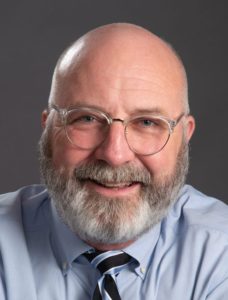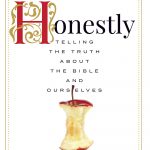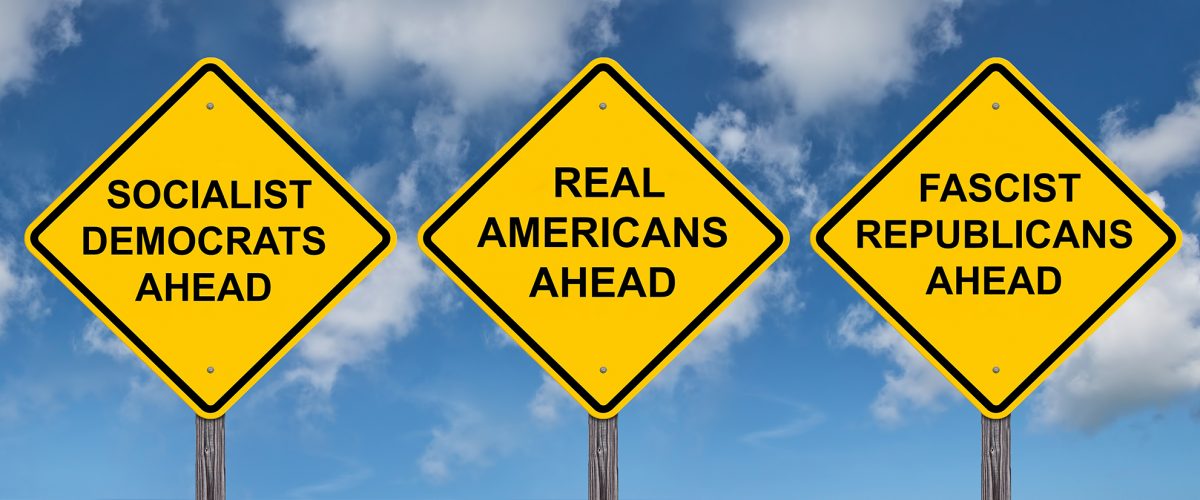Some among us want you to believe they represent the “center” politically or theologically — or both. Which causes me to ask: The center of what?
This mythical center is wielded as a means of saying to others: “You’re an extremist, but I’m not. I am the reasonable person. I am the safe person not swayed by either side.”

Mark Wingfield
To claim your own views as being “centrist” allows you to believe you’re rising above the fray of partisanship and have found higher ground.
The first problem is, the “center” only occurs in linear thinking. And the second problem is, finding the center of a linear array requires looking at the full array.
For example, no one who identifies as a Southern Baptist may rightly call themselves a “centrist,” just as no one who identifies as an atheist may rightly call themselves the same. The entire realm of the SBC exists within the rightmost sector of a linear presentation of American religious ideology. Even if you are on the left end of the Southern Baptist spectrum, you are not a centrist in American thought.
Now, you may claim to be a “centrist” within the scope of the SBC, which is saying something altogether different. But even that is dangerous.
We saw this play out in the late 20th century during the SBC’s Battle for the Bible, in which folks like me wanted to be called “moderates,” not “liberals,” and folks like those taking over wanted to be called “conservatives,” not “fundamentalists.” Context is everything.
Liam Adams, religion writer for the Nashville Tennessean, recently ran into this dilemma anew while covering the modern SBC: How do you differentiate in labels between Southern Baptists who are all quite conservative but some even more conservative?
An old preacher friend of mine was famous for saying, “Everyone sees the world through his own knothole.”
“My description of your position is relative to my own position.”
My description of your position is relative to my own position. And vice versa. What may appear to be a liberal position in Southern Baptist life might also appear to be conservative in another denomination. What appears ultra-conservative to most people might appear normative and reasonable to those who hold those positions. What might seem liberal in America could appear quite conservative in Europe.
If historical figures could time travel, they might be shocked at how they would be labeled in a modern context. Defining a linear center requires suspending the realities of time and complexity.

In Kentucky — as I’m sure elsewhere — two towns illustrate the danger of linear labeling.
Middletown, Ky., is an eastern suburb of Louisville, reportedly so named because in the old days it was established as the midpoint between Louisville and Shelbyville. While that may be geographically true still today, the reality is that Middletown has been subsumed into Metro Louisville and no longer would be the halfway point by train, car or bus.
Likewise, Centerville, Ky., was so named because it lies equidistant between Lexington, Paris, Georgetown and Cynthiana. That geographical distinction means nothing today, as Lexington has grown into the largest of those four towns.
What was the “middle” or “center” way back then no longer is true.
“Whatever had been the center no longer was.”
Back to the SBC. When we “moderates” or “liberals” fled the convention at the turn of the century, the remaining playing field of the SBC immediately shifted rightward. Whatever had been the center no longer was.
Same with American politics. The modern-day Republican Party — under the influence of Trumpism and more — has shifted so far to the right that once-reliable conservatives like Mitt Romney look like old-fashioned liberals.
But wait, there’s more.

Lights on Earth (Elements of this image furnished by NASA) (Shutterstock)
Seeing yourself at the center assumes there actually is a center. Americans notoriously are criticized for acting as though we are the “center of the universe.” Being a dominant force does not make one a centrist force.
This “center of the universe” analogy also breaks down when we realize there is no center of the universe. There’s not even a center of the earth — considering land space. We live on an orb; how do you locate the center of that?
Cosmologists tell us we may think of the earth as the center of the universe only to the extent the universe is fully visible — which it is not.
“You may be a ‘centrist’ among the universe of people you know, but that says more who you know than about you.”
And that brings us back to the matter of perspective. You may be a “centrist” among the universe of people you know, but that says more who you know than about you.
Finally, calling yourself a “centrist” too often assumes that’s the superior intellectual or moral position to hold. To the rest of us, it almost always is said with an air of superiority.
Would it have been good to be a “centrist” on the Civil War? On the Holocaust? On 9/11?
Here’s the curious thing: I don’t know many progressives or liberals who are clamoring to be called “centrists.”
To value the mythical center is akin to valuing the traditional white narrative of the history of the world. It fails to consider the complexity of narratives that overlap, when seen from a truly global perspective. It assumes you know the unknowable middle.

(123rf.com)
Our political and theological lives are like multi-dimensional chess games, not points on a single line. Our positions are more like dials on a series of combination locks. Just because you’re a Baptist who theoretically supports women in ministry doesn’t mean you’re a centrist — especially if you support conversion therapy for gays and lesbians. Likewise, being a political conservative who denounces Donald Trump doesn’t make you a centrist — especially if you’re not working to undo his immoral treatment of immigrants, women, Blacks and a list of other victims.
There is no one defined center.
Is there a better way? Yes, but getting there will require walking away from a deeply American hallmark: Binary thinking. Politically, we are organized into a two-party system that tends to be winner-take-all. In this mindset, no third-party candidate stands a chance.
Look at what has happened in the Republican Party. The most dangerous and unhinged president in modern history — perhaps in all history — was elected by the power of “centrist” Republicans who valued party over country by voting with their party’s far-right ideologues. To hold your nose and vote for a known demagogue like Trump is not to value the center of anything.
“Those who claim to be centrists are able to do so only by painting enemies on both sides — which is also taking a partisan position.”
If you want to be a “centrist,” help us find a way beyond a political system that drives the most partisan candidates to the top. One easy fix for that is ranked voting. A second easy fix is to outlaw gerrymandering. A third is to abolish the antiquated Electoral College.
Unfortunately, American Christianity mirrors our politics and is driven by theological extremes too. But even that is a jumbled mess because not many of us are thoroughly conservative or liberal. We are all a mix. Which is why single-dimension linear thinking will not do.
Again, the fix is to get rid of binary thinking of liberals versus conservatives. Those who claim to be centrists are able to do so only by painting enemies on both sides — which is also taking a partisan position.
We need a stronger dose of the early 20th century hymn that says, “In Christ there is no east or west, in him no south or north.”
Remember this: Jesus was not — and is not — a centrist by anyone’s measure. Yet the only center is Jesus, and none of us is Jesus.
 Mark Wingfield serves as executive director and publisher of Baptist News Global. He is the author of the new book Honestly: Telling the Truth About the Bible and Ourselves.
Mark Wingfield serves as executive director and publisher of Baptist News Global. He is the author of the new book Honestly: Telling the Truth About the Bible and Ourselves.
Related articles:
New data show America’s challenge is not because ‘both sides are wrong’ | Analysis by Rick Pidcock
Get ready for a third Baptist alternative to emerge | Opinion by Bill Wilson
Now is the moment for radical moderation | Opinion by Erich Bridges


